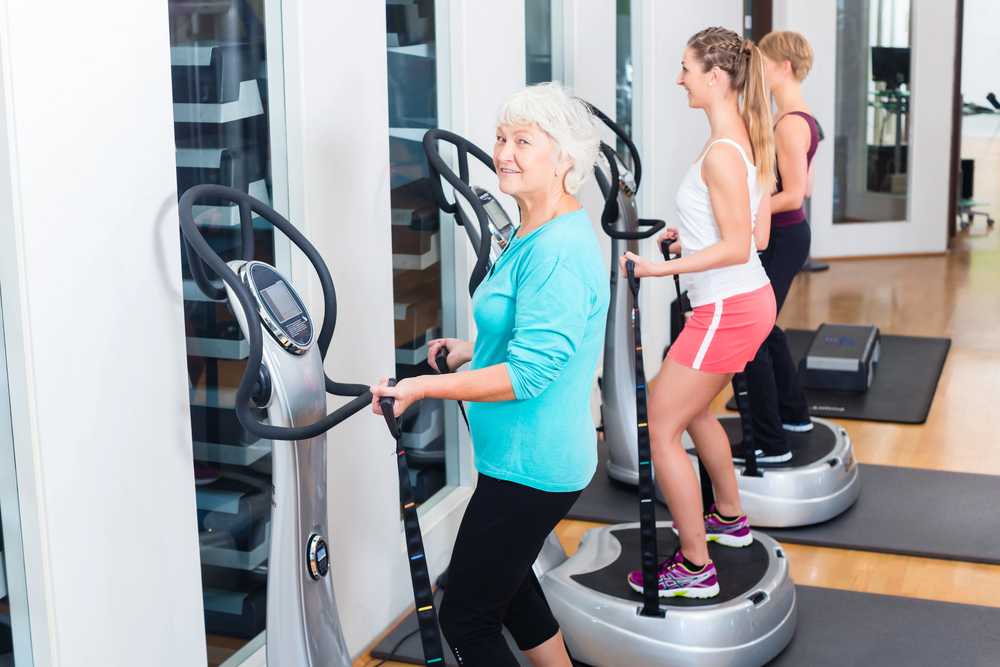
ook—vibration plate benefits for recovery might sound like one of those gimmicky infomercial things, right? I thought so too. Until I tried one after a brutal leg day and woke up the next morning without feeling like I got hit by a truck. Weird. Almost suspicious. Like my muscles forgot they were supposed to be sore.
The Quiet Crisis: You’re Probably Not Recovering Like You Think
There’s this unspoken epidemic in gyms right now—people grind, lift, sprint, sweat… and then totally botch the recovery part. We foam roll a bit, sip some electrolyte drink (tastes like cough syrup, honestly), and collapse into Netflix thinking our bodies will “do their thing.”
Spoiler: they don’t. Or at least, not efficiently.
We live in a go-go-go culture that somehow believes rest is weak. Like if you’re not sore, you didn’t earn it. But what if I told you—no, not in a Morpheus way, but like… real talk—what if your lack of soreness actually meant your body recovered better? That maybe soreness isn’t a badge of honor but a red flag?
And that’s where these plates come in. The ones that buzz like a futuristic beehive under your feet.
Standing on a Plate That Shakes You to the Core (Literally)
Let’s jump into it. First off, vibration plate benefits for recovery are not a new TikTok fad, though yeah—it’s trending there, too. (Of course it is. So is butter in coffee and “mouth taping.”)
Anyway—here’s what’s fascinating. The science, as jumbled and dry as it can be, backs it up. When you stand or squat or stretch on a vibration plate, your muscles contract and relax rapidly. Like—30 to 50 times per second. Imagine your quads getting massaged by an invisible swarm of mini shocks. Not painful. Just… buzzy. Like standing on a cat’s purr.
This rapid-fire stimulation floods your muscle tissue with oxygen-rich blood, speeding up nutrient delivery and helping clear out that metabolic junk—like lactic acid—that builds up after a workout.
Some people say it feels like your body is “rebooting.” I get that. It’s like when your brain fog lifts after a walk in the cold. Sharp. Alive.
Wait, Are You Saying This Replaces Stretching?
No. I mean—yes and no.
It complements it. Or rather, amplifies it. Think of it as the espresso shot in your foam rolling routine. I still stretch (mostly so I can pretend I’m a yoga person). But the vibration plate? That’s become my post-workout ritual. Kind of like brushing your teeth but for your fascia.
The Weird Lymphatic Thing That No One Talks About
Now here’s something I didn’t expect.
After a week of daily 10-minute sessions, I noticed something strange. My legs felt lighter. Like… noticeably. Almost floaty. I Googled it—because of course—and discovered vibration therapy boosts lymphatic drainage.
If you’re not familiar, the lymph system is like your body’s garbage disposal. But unlike your heart, it doesn’t have a pump. It needs motion. And guess what? Vibrations do the trick.
That sluggish, heavy-leg feeling after flights or leg day? Gone. Like magic. Or at least—like very good science disguised as magic.
But Is It Legit for Rehab?
Yes. And also, maybe no. Or rather—ask your PT.
But also yes.
There are clinics that only use vibration therapy for certain types of injuries. We’re talking post-op stiffness, tendon rehab, and neurological recovery. The beauty here is that the plate stimulates tissue without loading the joint. So if your knees are toast but your will to recover is strong, this is a low-impact tool that brings circulation without strain.
Also, fun fact: NASA used vibration therapy to prevent muscle atrophy in astronauts. (They float. We don’t. But still.)
The Little Hormone Trick Nobody Told Me About
Okay, so one random evening I did my usual 10-minute session—and afterward I felt, no joke, amazing. Like post-runner’s-high amazing. I hadn’t done cardio, I hadn’t lifted heavy. I just stood on a plate and let it shake me.
Turns out? Studies show vibration boosts testosterone and HGH levels briefly while reducing cortisol (that nasty stress hormone that makes you feel wired and tired).
Is it dramatic? Maybe. But if you’re juggling a full-time job, side hustle, bad sleep, and gym sessions—those micro hormonal shifts matter. It’s like giving your recovery chemistry a little nudge in the right direction.
My Real Routine (Sometimes Skipped, Often Improvised)
I keep it simple.
Before workouts: 90 seconds on the plate while doing dynamic stretches. Loosens the hips fast.
After workouts: 5–8 minutes of just standing or light squats on the plate. I usually listen to a podcast during this.
Rest days: 12–15 minutes of stretching on the plate. Sometimes I get distracted mid-session and eat yogurt—whatever.
Questions I Had That You Probably Have Too
Does it hurt?
Nope. Unless you crank the settings way too high—then your brain might feel like it’s in a paint mixer.
Do I need fancy models?
Not really. I use a mid-range Amazon plate with adjustable frequency. Works fine. Just don’t cheap out entirely—buzzing should feel smooth, not jarring.
Can it replace massage guns?
In some ways, yes. Massage guns target one area. Vibration plates do everything at once. It’s like global versus local relief.
Final Thought, If You Can Call It That
There’s this moment—right after you finish a plate session—where your body feels like it’s humming. Not in a weird way, just… aligned. Like everything clicked back into place.
I used to think recovery was passive. Rest days meant doing nothing. But now? It feels like an active strategy. A chess move. One that makes the next day’s workout smoother, sharper, better.
If you haven’t tried this yet—maybe you should.
Or don’t. Keep limping around for days after leg day.
Your choice.
P.S. If you end up trying it and it changes your routine? Let me know. I’ll be on mine—standing there, slightly vibrating, listening to 90s hip hop, probably recovering better than I deserve.





